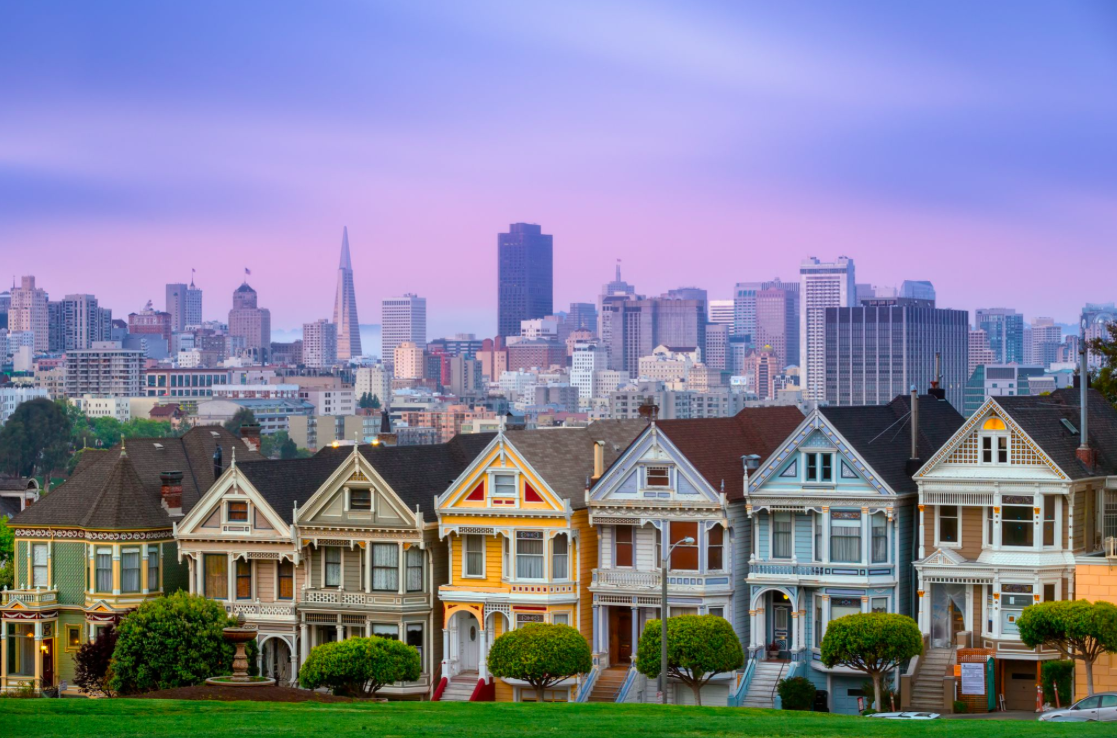|
With big companies like Facebook, Twitter, and Shopify setting the trend for employees to work from home forever-ish, potential home buyers are wondering why they're living in a pricey city to be close to work when work is actually just their dining table most days anyway.
This may explain why the Oakland market is recovering much faster than in San Francisco or San Jose. Move-in ready homes in Oakland are selling in 5-10 days with multiple offers. There are fewer homes on the market, but almost as many people searching as there were pre-pandemic. The more suburban cities like Berkeley or Walnut Creek will likely see an increase in buyers too as remote work becomes the norm. I mean hey, if your money could get you a bigger house with an actual yard and your only trade-off is having a longer commute where you cry in the car two days out of the week instead of five, then I say why not? Inquiring minds want to know. To answer our burning questions, Estately mapped out the relative cost of living near BART, compiling the average sale price per square foot for all the houses, townhouses and condos that have sold within a one-mile radius of each BART station over the past six months.
(If squinting at the blurry numbers on the map is hurting your eyes too, click here for a larger view.) Here are the ten “most expensive stops” and relative commute times to Downtown San Francisco (defined as Embarcadero station): 1. Embarcadero – $1,191 per square foot (0 minutes) 2. Montgomery Street – $1,149 (2 min) 3. Powell Street – $1,099 (4 min) 4. 24th Street/Mission – $1,001 (9 min) 5. 16th Street/Mission – $998 (7 min) 6. Civic Center – $994 (6 min) 7. Millbrae – $854 (25 min) 8. Glen Park – $817 (11 min) 9. SFO – $735 (32 min) 10. Rockridge $704 (20 min) And the ten least expensive: 1. Pittsburg/Bay Point – $219 per square foot (62 minutes from Downtown San Francisco) 2. Richmond – $258 (35 min) 3. Coliseum – $270 (20 min) 4. North Concord/Martinez – $306 (56 min) 5. Concord – $317 (43 min) 6. Hayward – $347 (32 min) 7. South Hayward – $356 (36 min) 8. San Leandro – $366 (24 min) 9. Bay Fair – $376 (28 min) 10. Castro Valley – $406 (32 min) BART is also extending from Fremont into Silicon Valley, where new housing, commercial and retail developments are already being planned around the future South Bay BART stations. Home values nearby will probably increase, along with the number of commuters crammed into a sardine can of a BART train. Oh, that's it? Apologies in advance for the buzzkill, but according to a new Charles Schwab survey, to be considered "wealthy" in the Bay Area, you need a net worth of at least $6 million. A net worth of $1 million is the baseline for being "comfortable." That's all, no big deal.
Charles Schwab surveyed 1,000 Bay Area residents aged 21 to 75 in Alameda, Contra Costa, Marin, SF, San Mateo, Santa Clara and Solano counties. The survey asked what residents considered enough money to be "wealthy" vs. "comfortable." They believed $2.5 million was the average needed to be wealthy in other parts of the country. The survey unsurprisingly found that locals are shocked by the cost of living here. 86% said the cost of living is "unreasonable" and 55% said living in the Bay Area makes it "difficult to reach their financial goals." To counteract these depressing stats, the majority also believe this is a prime place for career growth and innovation, and the Bay Area's economy is better than the national one. Stephen Curry, the superstare behind the record-breaking Warriors team, recently bought a modest $3.2 million home in Walnut Creek. The house came on the market in April for $3.988 million and was more recently priced at $3.65 million. It previously sold for $2.5 million last year.
With 5 bedrooms, 5 bathrooms, and 8,000 square feet sitting on an acre of land, this two-story Mediterranean estate includes a 2,300 bottle wine cellar for lots of wine guzzling and 4 fireplaces for some more s'more making. Just in time for the holidays. |
Michaela ToAll things real estate. Categories
All
Archives
April 2022
|





